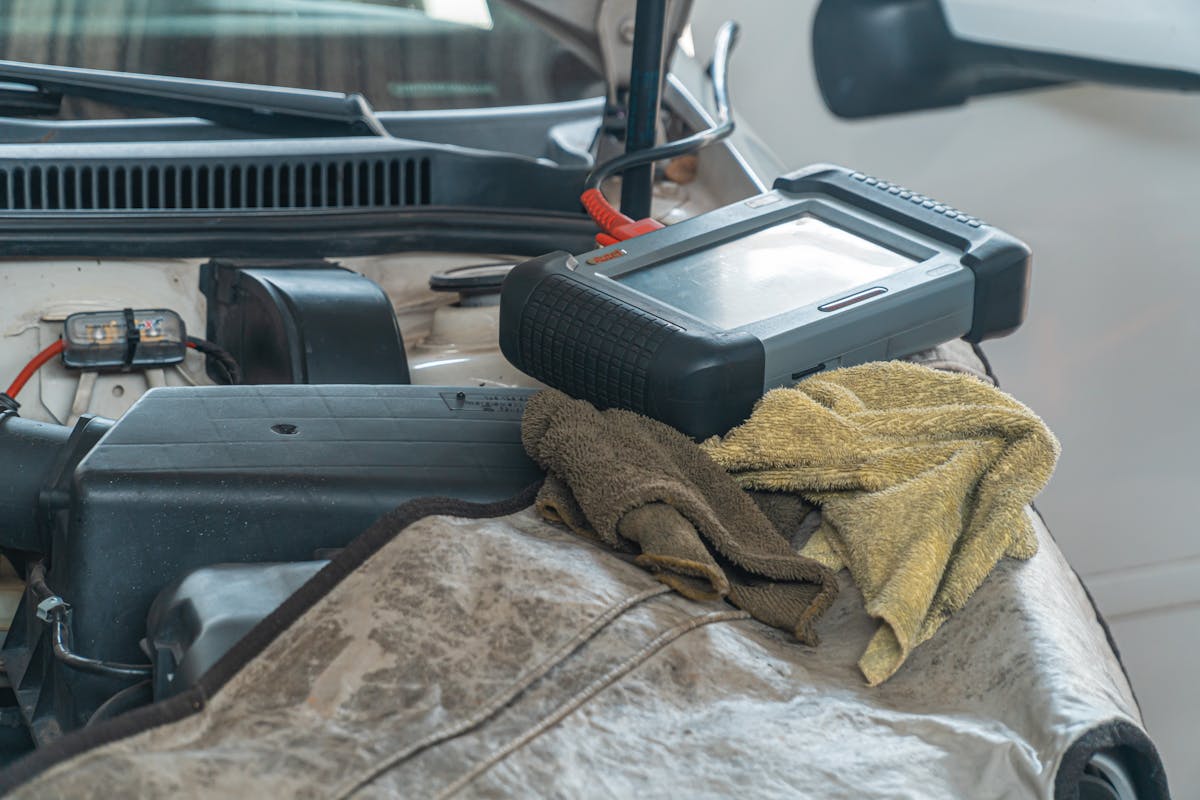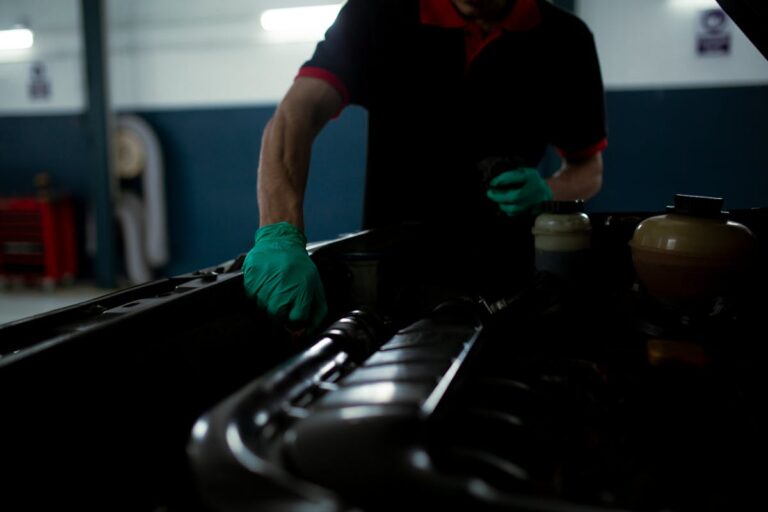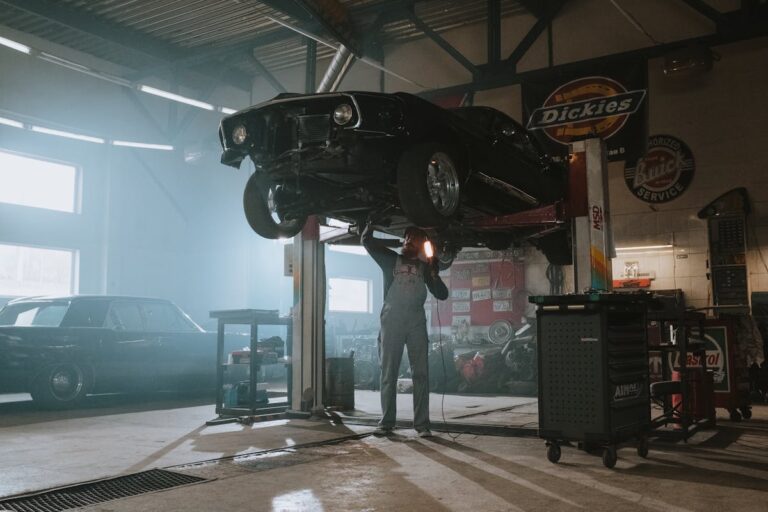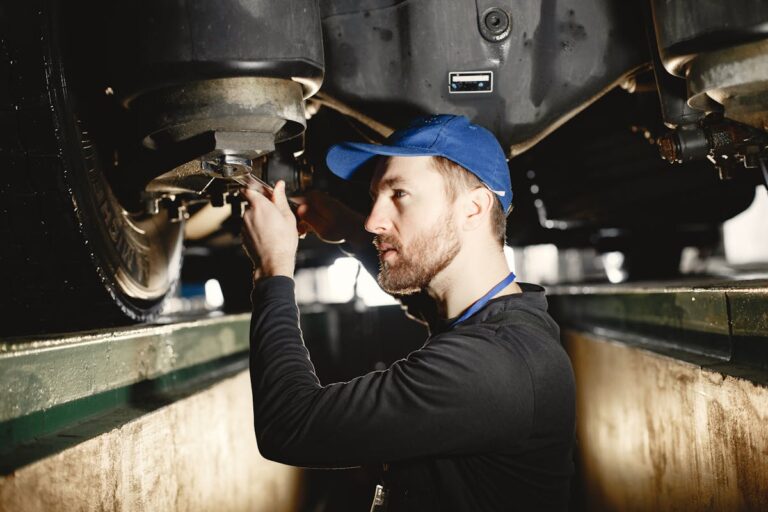Deciphering collision repair estimates can be a challenging task for vehicle owners, often filled with industry-specific jargon and complex pricing structures. Understanding these estimates is an essential aspect of ensuring fair pricing and avoiding unexpected costs. From differentiating between OEM and aftermarket parts to identifying potential red flags in these estimates, there is a wealth of knowledge to be gained. Now, the question arises – how can one navigate this intricate process with confidence and ease? The answer lies in equipping oneself with the right information, which we will explore in the following discourse.
The Basics of Collision Repair Estimates
Understanding the intricacies of collision repair estimates is vital when dealing with auto accidents. It is the initial step in the process of vehicle restoration, commonly known as the collision assessment. This procedure involves a meticulous examination of the vehicle to identify all the damages caused by the accident.
The collision assessment plays an important role in determining the estimate accuracy. It is an intricate process that requires a detailed evaluation of every part of the vehicle, from the exterior body to the internal mechanisms. The scope of the damage, the cost of the parts needed for repair, and the labor hours required all contribute to the overall estimate.
A thorough collision assessment guarantees the accuracy of the repair estimate. The more precise the assessment, the more accurate the estimate, reducing the chances of unexpected repair costs down the line. Reputable repair service providers will offer a detailed breakdown of the cost, helping customers understand where their money is going. This transparency not only builds trust but also allows vehicle owners to make informed decisions about their car’s repair. To summarize, understanding the basics of collision repair estimates can greatly assist in maneuvering the aftermath of an auto accident.
Decoding Repair Shop Jargon
Comprehending the complexities of collision repair estimates is only the first step in traversing the repair process after an auto accident. The next vital aspect involves decoding the repair shop jargon. Understanding repair terminology and shop communication can greatly simplify the entire process.
- Aftermarket Parts: These are replacement parts that were not made by the original vehicle manufacturer. They are often cheaper but may not always match the quality or fit of original factory parts.
- OEM (Original Equipment Manufacturer) Parts: These are parts made by the vehicle’s manufacturer. They are typically more expensive but offer the highest quality and fit.
- R&I (Remove and Install): This term is used when a part is removed from your vehicle and reinstalled after a repair has been done. It does not mean the part was replaced.
- LKQ (Like Kind and Quality): LKQ refers to a used part that was salvaged from another vehicle. These are inspected for quality and are an affordable alternative to new parts.
Arming yourself with this basic repair terminology is key for effective shop communication, ensuring you are not left in the dark during your collision repair journey.
Understanding Labor Costs
Labor costs form a significant component of any collision repair estimate. To understand this aspect, we will break down labor rates, explore the role of repair technicians, and analyze their impact on total costs. This insight will provide a clearer perspective on how labor costs contribute to your overall collision repair expenditure.
Breaking Down Labor Rates
One often encounters a variety of charges when reviewing an estimate for collision repair, chief among these are labor costs. Labor rates in the collision repair industry are not just random figures; they are carefully calculated based on several factors.
- Labor Market: The local labor market greatly impacts labor rates. Areas with a high demand for collision repair services tend to have higher labor rates due to increased competition for skilled technicians.
- Regional Variations: The cost of living in an area directly influences labor rates. In regions where the cost of living is high, labor rates are typically higher to compensate for the increased living expenses of the technicians.
- Overhead Costs: Overhead costs involved in running a collision repair shop, including rent, utilities, and equipment, are factored into the labor rate. The higher these costs, the higher the labor rate.
- Quality of Service: Shops that provide superior quality service often charge higher labor rates. These shops may have advanced equipment and highly skilled technicians, which justify their higher rates.
Understanding these factors can help consumers make informed decisions when choosing a collision repair shop and reviewing their repair estimates.
Role of Repair Technicians
In the context of collision repair estimates, the responsibilities of repair technicians hold paramount importance. They are not only responsible for restoring the vehicle to its pre-accident condition but also play a vital role in determining the labor costs associated with the repair process.
Repair technician expertise greatly influences the time required for repairs, which directly affects labor costs. Technicians with extensive experience and advanced skill sets can accomplish complex repairs more efficiently, potentially reducing labor costs. On the contrary, less experienced or inadequately trained technicians may require more time to complete the same task, which could increase labor expenses.
Technician communication is another essential factor. A good technician should be able to clearly explain the repair process, providing a detailed breakdown of the tasks involved, and the associated labor costs. This transparency fosters trust between the repair facility and the customer, ensuring that the customer understands where their money is going.

Effect on Total Costs
Understanding the impact of labor costs on the total repair estimate is essential for both vehicle owners and insurers. Labor costs can greatly influence the total repair cost, and understanding these costs can lead to more accurate estimates and cost comparisons.
- Labor costs are usually the most important portion of a collision repair estimate. They can include everything from the time it takes to complete the repair to the expertise of the technicians involved.
- For cost comparison purposes, labor costs can vary widely between different repair shops. This is due to differences in overhead costs, the experience level of technicians, and regional wage variations.
- The accuracy of the repair estimate heavily depends on a thorough understanding of labor costs. Underestimating labor costs can lead to cost overruns, while overestimating can cause the estimate to be unnecessarily high.
- It is vital for vehicle owners and insurers to understand that labor costs are not static. They may fluctuate based on factors such as repair complexity, parts availability, and even seasonal labor market conditions.
Parts Involved in Repair Estimates
The repair estimate’s next critical component revolves around the parts necessary for a successful repair. This subtopic will provide insights on how to identify these components and their respective costs. A thorough understanding of this aspect will guarantee that customers can efficiently navigate through the repair estimates they receive.
Identifying Repair Components
Maneuvering through the intricate details of a collision repair estimate, one might notice a variety of components that require attention. A thorough component analysis is crucial to understand the repair types needed and the costs involved.
- Structural Components: This refers to the vehicle’s core elements that maintain its structural integrity. Repair estimates often involve cost evaluations for components like the frame, body panels, or suspension systems.
- Mechanical Components: These include the engine, transmission, brakes, and other parts that contribute to the vehicle’s operation. Mechanical repairs can range from simple part replacements to complex overhauls.
- Electrical Components: Items like batteries, alternators, sensors, and wiring harnesses fall into this category. Electrical component repairs can be intricate due to the complexity of modern vehicle electrical systems.
- Cosmetic Components: These refer to parts that contribute to the vehicle’s aesthetic appeal, such as paint, trim, and upholstery. Cosmetic repairs are generally less critical to the vehicle’s function but can greatly impact its resale value.
Identifying repair components is an essential step in understanding your collision repair estimate. It not only allows you to grasp the extent of the damage but also gives an insight into the work required to restore your vehicle to its pre-accident condition.
Understanding Labor Costs
Delving into the parts involved in repair estimates, labor costs often emerge as a crucial factor. The labor cost is contingent on the complexity of the repair, the time it requires, and the expertise level of the technicians involved.
Understanding the labor market is key to comprehending how these costs are determined. In areas where there is a high demand for qualified technicians, labor costs may be higher due to the competitive nature of the market. On the other hand, in regions with a surplus of technicians, labor costs may be lower.
Technician qualifications also influence labor costs considerably. Technicians with advanced qualifications, specialized skills, or extensive experience often command higher labor rates. They are adept at diagnosing complex issues, performing precise repairs, and minimizing the likelihood of recurring problems, which justifies their higher rates.
Additionally, labor costs can also vary based on whether the repair facility is independently owned or part of a larger franchise. Independent shops might charge less, but franchises may offer warranties on their work. It’s vital to take into account these aspects when evaluating labor costs on a collision repair estimate.
How Insurances Influence Estimates
Steering through the intricate world of auto insurance can greatly impact collision repair estimates. Your policy’s insurance coverage and the claims process are significant factors that can influence the cost you might face after an accident.
- The extent of insurance coverage varies from one policy to another. Extensive insurance policies usually cover collision repair costs, while liability insurance only covers the other party’s vehicle if you’re at fault. Your level of coverage will directly determine the out-of-pocket costs you’ll have to bear.
- The insurance claims process plays a pivotal role. You’ll need to inform your insurer about the incident and provide all necessary documentation for them to assess the claim. Their evaluation will determine how much they are willing to cover for the repair work.
- Depending on your policy, insurance may insist upon using an in-network repair shop, potentially limiting your options.
- Finally, your deductible can influence the final repair estimate. The higher the deductible, the lower your premium, but the more you’ll have to pay out-of-pocket for repairs.
Understanding these aspects of insurance can help you better navigate the process and potentially reduce your collision repair costs.
Negotiating With Repair Shops
As a vehicle owner, knowing how to effectively negotiate with repair shops can greatly lower your collision repair costs. This negotiation process begins with clear and assertive repair shop communication. It’s paramount to voice your concerns and expectations regarding the repair work upfront. Being proactive in discussing the extent of the damages, the necessary repairs, and the associated costs can lead to a more reasonable estimate.
Incorporating price comparison techniques is also crucial. Gather multiple estimates from different repair shops and compare them. Look at the breakdown of costs, including labor and parts, to guarantee you’re getting a fair deal. Be cautious, however, of unusually low estimates; this could mean inferior quality parts or inadequate service.
Spotting Red Flags in Estimates
Steering through the world of collision repair estimates can be tricky, especially when it comes to spotting potential red flags. Understanding what constitutes a warning sign is essential for ensuring estimate accuracy and getting fair treatment from repair shops.
Here are four red flags to watch for:
- Unusually Low Estimates: Beware of estimates that seem too good to be true. They often are. Low-cost estimates may signal that the repair shop is cutting corners or using substandard parts.
- Lack of Itemization: A proper estimate should be detailed and itemized, listing all labor and parts costs. If these details are missing, it may indicate a lack of transparency.
- Pressure to Use Specific Shops: Insurance companies might steer you towards their preferred repair shops. However, you have the right to choose your repair shop.
- Inconsistencies Between Estimates: If you’re getting multiple estimates, significant inconsistencies between them can be a red flag. It suggests that one or more shops are not accurately evaluating the damage.
Frequently Asked Questions
How Long Does a Typical Collision Repair Take?
Typical collision repair timeframes can vary considerably based on damage severity, parts availability, and shop capacity. Estimating delays are common, but a standard repair often takes between one to two weeks.
What if My Vehicle Is Deemed a Total Loss After Estimation?
If your vehicle is deemed a total loss post-estimation, your insurance company will provide options. Typically, they offer a cash settlement based on market value or replacement with a similar vehicle, depending on your policy.
Can I Choose My Own Repair Shop, or Must I Use One Recommended by Insurance?
Yes, you can choose your own repair shop. However, it’s important to consult your insurance policies first. They may have specific shop preferences or partnerships that could influence coverage and out-of-pocket costs.
How Do I Deal With Repair Estimates if the Collision Was Not My Fault?
In cases where the collision wasn’t your fault, insurance claims are usually handled by the at-fault party’s provider. It’s essential to engage in repair negotiations to guarantee you receive a fair and accurate repair estimate.
Is It Necessary to Get Multiple Repair Estimates Before Proceeding With the Repair?
Obtaining multiple repair estimates enhances accuracy by providing a range of costs. It also aids in understanding potential insurance policy implications. However, it’s not mandatory but advisable for transparency and ensuring fair pricing.


